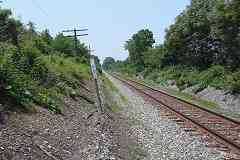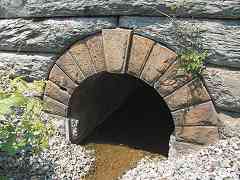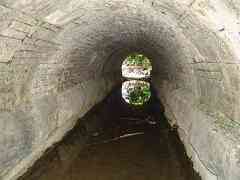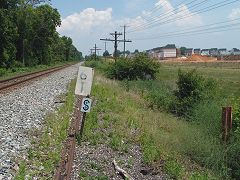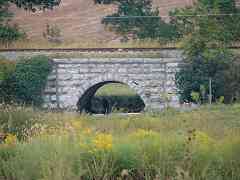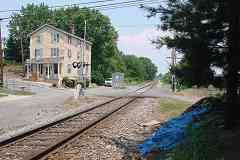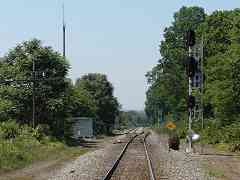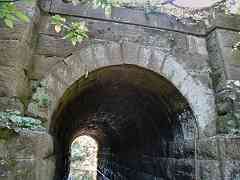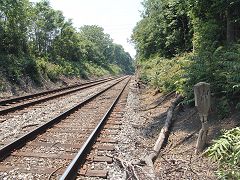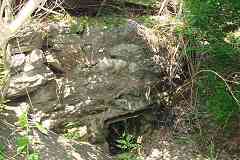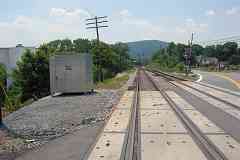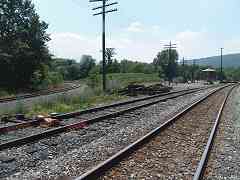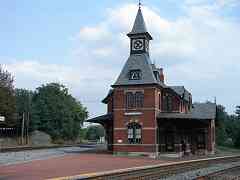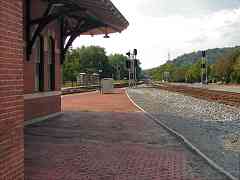|
During 1875 B&O completed the dramatic, Baldwin-designed Point of
Rocks Station. Here the then new Metropolitan Branch (right) and OML
(left) meet, and MARC commuter service means passengers still put
the site to its intended use.
Most of the station had to be rebuilt in 1931 after lightning struck
and severely damaged the original. In person and up close, you can
observe the obviously different ages of various sections of brick.
The building is on the National Register of Historic Places.
By 1832, B&O had built some 65 miles of track from Baltimore to
here at Point of Rocks. That's an impressive rate of more than 15 miles
of track per year at a time when virtually all the work was done by hand,
and much of it redone after the initial track designs proved unacceptable.
Double tracking would wait until the 1850s.
Links:
1977,
1980,
1984,
1988
| 